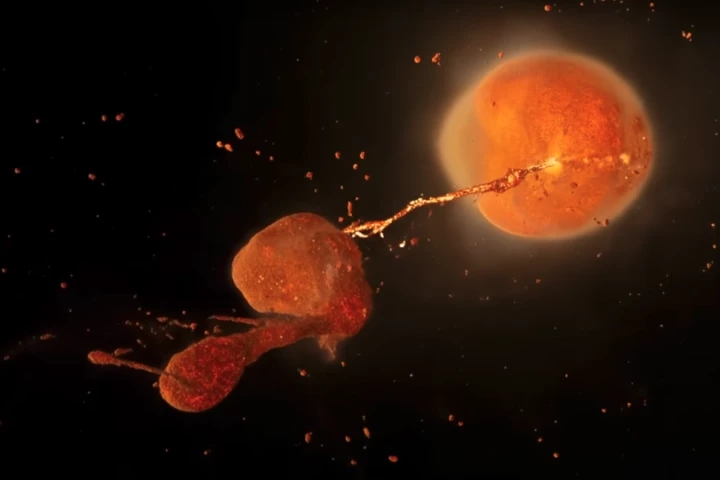Simulations
-
BC8 superdiamonds are harder than any known material, but they likely only exist in the cores of giant exoplanets. Now, the Frontier supercomputer has unraveled the secret of their formation, a finding that could lead to their production on Earth.
-
Google has put AI to work as a weatherman, and shown that in just one minute on a single machine, it can make accurate predictions up to 10 days in advance, a task that normally takes a room full of supercomputers hours to achieve.
-
In order to protect the F-16 fighter from modern electronic threats, Northrop Grumman put its AN/ALQ-257 Integrated Viper Electronic Warfare Suite up against "attacks" from the US Air Force Laboratory Intelligence Validated Emulator testing system.
-
It’s believed that the Moon formed billions of years ago, from debris from a cosmic collision with Earth. New high-resolution simulations not only illustrate the idea in stunning detail, but reveal that the Moon’s birth might have taken mere hours.
-
Engineers have demonstrated a quantum integrated circuit made of just a few atoms. By precisely controlling the quantum states of the atoms, the processor can simulate the structure and properties of molecules, which could unlock new materials.
-
Contrary to their name, black holes are known to fire off flares from time to time, but exactly how this happens is shrouded in mystery. High-resolution simulations have now revealed how twisting magnetic fields can throw off huge amounts of energy.
-
As people get older, the intervertebral discs in their spine tend to deteriorate, some of which end up being surgically replaced with implants. A new patient-specific spinal model, however, could help determine how successful such surgery will be.
-
If you've seen even a single shark documentary, then you've probably heard that the majority of attacks on humans are likely due to sharks mistaking people for seals. Scientists now say they've confirmed that theory, using computer models.
-
A collection of computer simulations based on data from NASA’s Chandra X-ray observatory is offering astronomers and the public alike the ability to explore cosmic objects in 3D. The visualizations let users pan around stars and supernovae remnants.
-
A new study has used simulations to show that even Earth-like planets completely encased in ice could still have areas warm enough for life, muddying up the already-murky definition of habitable worlds.
-
Hurricanes and water go hand in hand. But researchers from Purdue University and MIT have now made a surprising discovery by tweaking a hurricane simulation – the storms can occur under much colder and drier conditions than previously thought, which may be common on other planets.
-
Martian clouds could have an alien origin, according to a newly-published paper. The study suggests that mid-level clouds form above the Red Planet due to a phenomenon called "meteor smoke," which occurs when space debris is shredded upon entering the Martian atmosphere.
Load More











